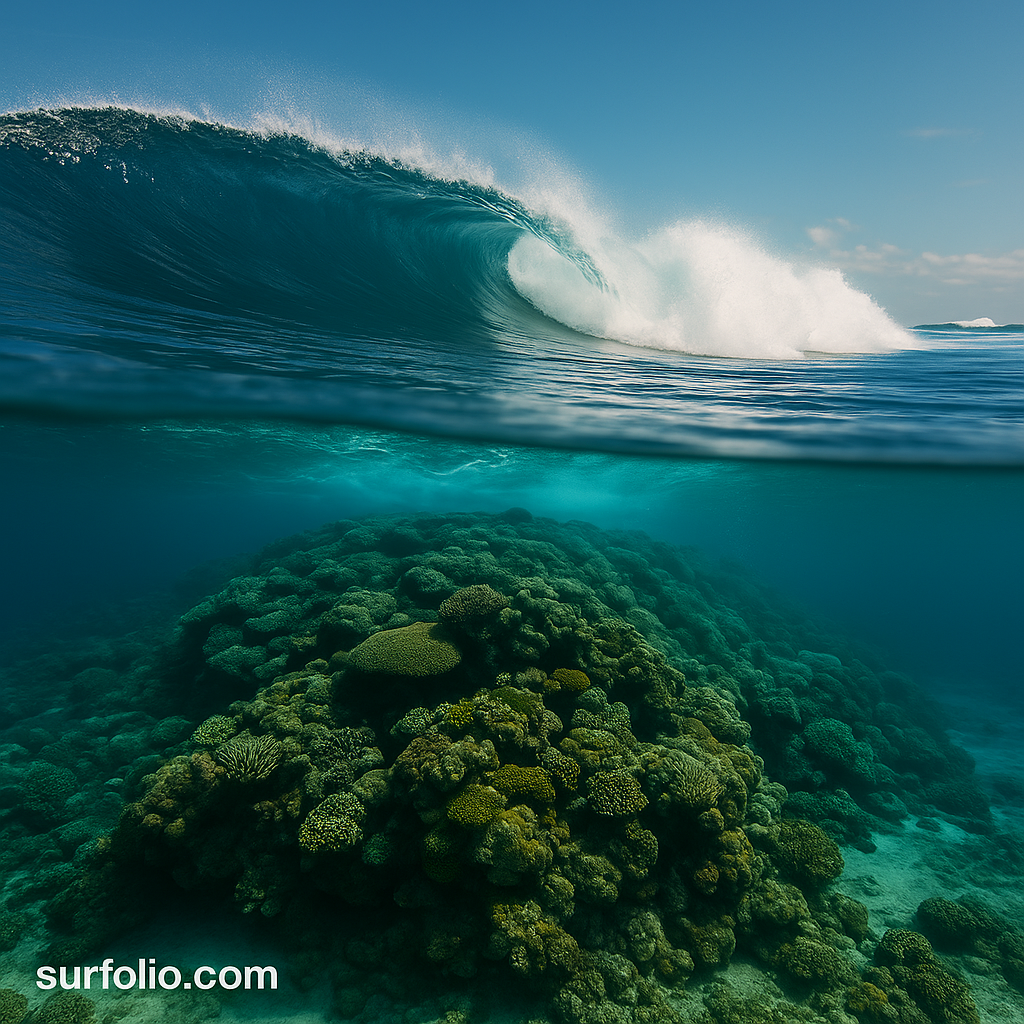
Every surfer dreams of that perfect, glassy barrel—but few stop to think about what makes it possible. Coral reefs play a massive role in shaping some of the best waves on Earth. From Tahiti’s Teahupo’o to Hawaii’s Pipeline, reefs are nature’s architects, transforming deep-water swells into the flawless waves surfers chase across the globe.
How Waves Interact with Coral Reefs
When swells travel across the open ocean, they carry energy but little shape. It’s the ocean floor—especially coral reefs—that transforms that energy into the surfable waves we know and love.
As the swell approaches a reef, the shallower depth causes the wave to slow down and rise, concentrating energy upward. The steeper the reef, the faster and more powerful the wave breaks. Reefs with gentle slopes create rolling, mellow waves, while sharp, abrupt shelves produce hollow, barreling monsters.
Why Coral Reefs Create Perfect Waves
Coral reefs often form smooth, predictable contours—unlike shifting sandbars that change with every storm. This consistency allows waves to break in the same spot and pattern every time, which is why reef breaks are so reliable and world-renowned.
Here’s how reefs influence wave shape:
- Steep reefs: Create fast, hollow barrels (like Teahupo’o or Pipeline).
- Gentle reefs: Produce long, mellow rides perfect for intermediate surfers.
- Reef ledges: Focus wave energy, forming powerful peaks that break with precision.
Because coral grows gradually and forms stable structures, reef breaks can stay consistent for decades—making them ideal playgrounds for surfers and perfect canvases for photography.
Famous Reef Breaks Around the World
- Pipeline, Hawaii: Known for its heavy, barreling waves over a sharp reef shelf.
- Teahupo’o, Tahiti: Famous for its thick, glassy slabs breaking over shallow coral.
- Cloudbreak, Fiji: Offers long, powerful lefts with multiple sections that challenge even pros.
- Uluwatu, Bali: A classic Indonesian left-hander that wraps beautifully over its reef platform.
Each of these breaks owes its perfection to coral reef formations that sculpt swells into powerful, artful waves.
Reefs and Coastal Protection
Beyond surfing, coral reefs serve a critical environmental purpose. They act as natural breakwaters, absorbing wave energy and reducing coastal erosion. During storms or high tides, reefs protect shorelines from destructive waves, safeguarding beaches, mangroves, and coastal communities.
In fact, scientists estimate that coral reefs reduce wave energy by as much as 97%, making them one of the most effective natural defenses against ocean damage.
Threats to Coral Reefs
Unfortunately, the very reefs that make surfing possible are under threat. Rising ocean temperatures, pollution, and overfishing have led to coral bleaching and habitat loss worldwide. As reefs degrade, their ability to shape waves and protect coastlines weakens.
Surfers have become increasingly involved in conservation efforts through initiatives like Coral Gardeners, Save the Reef, and Surfrider Foundation, helping restore damaged reefs and raise awareness about ocean health.
Final Thoughts
Coral reefs are more than underwater beauty—they’re living wave machines. Every time you drop into a perfect barrel or carve across a clean wall, you’re experiencing the artistry of these natural structures.
Protecting coral reefs isn’t just an environmental cause—it’s a surfer’s responsibility. The health of our reefs ensures the future of perfect waves, thriving marine life, and coastal ecosystems for generations to come.
